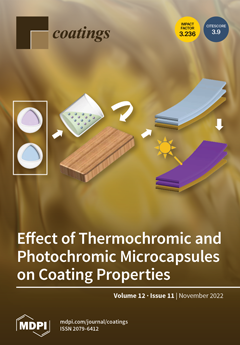This paper reports a method for fabricating pie-shaped CoMoO
4 nanomaterials. The morphologic characterization and phase analysis showed that the prepared material was CoMoO
4 and presented a pie-shape. Pie-shaped CoMoO
4 electrode materials possess high specific capacitance in three-electrode electrochemical measurement systems.
[...] Read more.
This paper reports a method for fabricating pie-shaped CoMoO
4 nanomaterials. The morphologic characterization and phase analysis showed that the prepared material was CoMoO
4 and presented a pie-shape. Pie-shaped CoMoO
4 electrode materials possess high specific capacitance in three-electrode electrochemical measurement systems. When the current density is 1 A/g, the specific capacitance reaches 1902 F/g. In addition, it has good cycle stability. With 10,000 charge–discharge cycle experiments at a current density of 15 A/g, pie-shaped CoMoO
4 has a specific capacity retention ratio of 99.5%. In addition, the CoMoO
4//CNTs device can provide a maximum energy density of 55.6 Wh/kg (1 A/g) and a maximum power density of 10,900 W/kg (15 A/g), showing good electrochemical performance. The photocatalytic properties of pie-shaped CoMoO
4 were also studied. The results show that the degradation rates of MO (methyl orange), MB (methyl blue), and CR (Congo red) can reach 97.8%, 98.8%, and 99.6% at 100 min, 40 min, and 65 min, respectively. The material has good photocatalytic performance. The excellent performance of pie-shaped CoMoO
4 indicates that the electrode material has potential application scenarios in electrode materials and photocatalysis.
Full article





